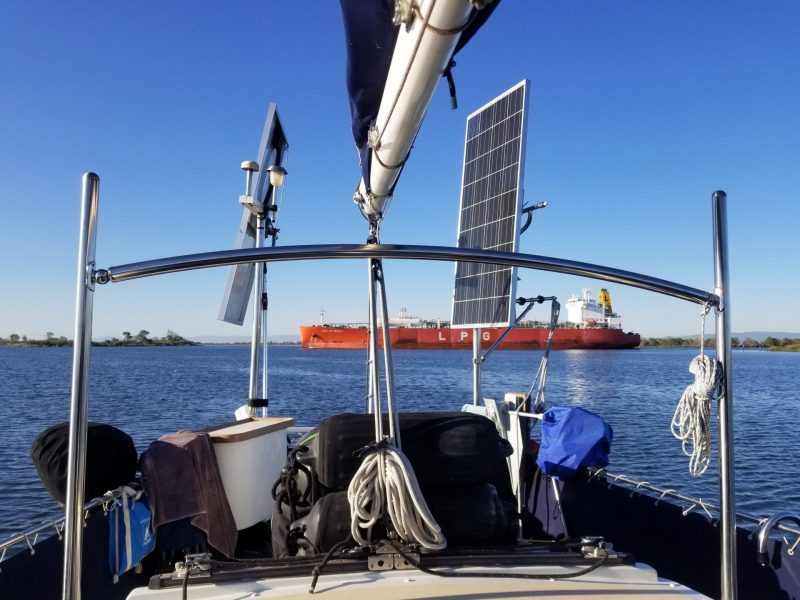
The Coronado 35 ‘Watchfire’ — A Season in the Delta
Between 1996 and 2000, Russel and Jennifer Redmond sailed their 26-foot Columbia sloop, Watchfire, around the Sea of Cortez for a year before heading south and through the Canal to Florida and back again to San Diego. After that, Watchfire became famous for having burned to ashes in a wildfire in San Diego’s backcountry; that sad ending was featured in Latitude. They eventually bought Watchfire 2, a Coronado 35, and sailed her to the S.F. Bay Area in 2020, and have since moved on to cruising Puget Sound. Jennifer wrote a book on the Columbia 26 adventures called Honeymoon at Sea: How I Found Myself on a Small Sailboat (Toronto), coming out in September. She wrote the following story about the months they spent in the Delta before heading on to the Pacific Northwest.
Russel and I had been in San Francisco’s South Beach Harbor Marina for two months, having arrived on Labor Day 2020. Our long-range plan was to take our highly modified Coronado 35 north to Puget Sound, but meanwhile, we enjoyed having Watchfire in a slip just outside the ballpark. That location was a dream for Giants fans like us, but now we were ready to explore the Delta for the first time. We left the marina on November 1 on a flood current, sailing across San Pablo Bay to the Carquinez Bridge. We were reminded of sailing in the Intracoastal Waterway of the Gulf Coast back in the ’90s as we navigated Carquinez Strait, under the bridges and into muddy, shallow Suisun Bay. The navigational waters are wide enough for huge container ships, so we stayed at the edge of the shallows on the starboard side, though we saw only one big tanker that day. Sailing down the near-empty channel with a light, steady west wind was relaxing, and we enjoyed the quiet after the noise of being in the ballpark’s backyard.

Back on the ICW we’d learned to stop early in the day, so that afternoon we nosed north out of the channel at the west end of Honker Bay and found an anchorage off tiny Snag Island in about two fathoms. We enjoyed the views of the faraway hills and the nearby field of motionless wind turbines while we dined, and soon settled down to sleep. First lesson: The wind turbines are put there for a reason!
By midnight the west wind was up, and so were we. Our Mantus anchor really digs in, so Watchfire stayed put, but between the boat’s movement and the keening wind, sleep was elusive. At dawn, it was gusting over 25 knots, which made cranking the anchor up with our manual windlass a bit of a challenge, but soon we were motoring past the now-spinning turbines out into the channel. The wind lessened as we went east, and at Pittsburg we turned onto the Sacramento River and sailed with the breeze.
That night we anchored in Horseshoe Bend at Decker Island, just shy of Rio Vista, so we could go into the marina the next morning on a slack current with calm wind, as is our custom. Having anchored with a west wind, we were surprised to see the current pulling us quite the opposite way an hour later (this was true in every anchorage during our time on the Delta). Again, our anchor always reset easily, and though our vistas changed constantly, we never dragged.
Continue reading at Latitude38.com.
